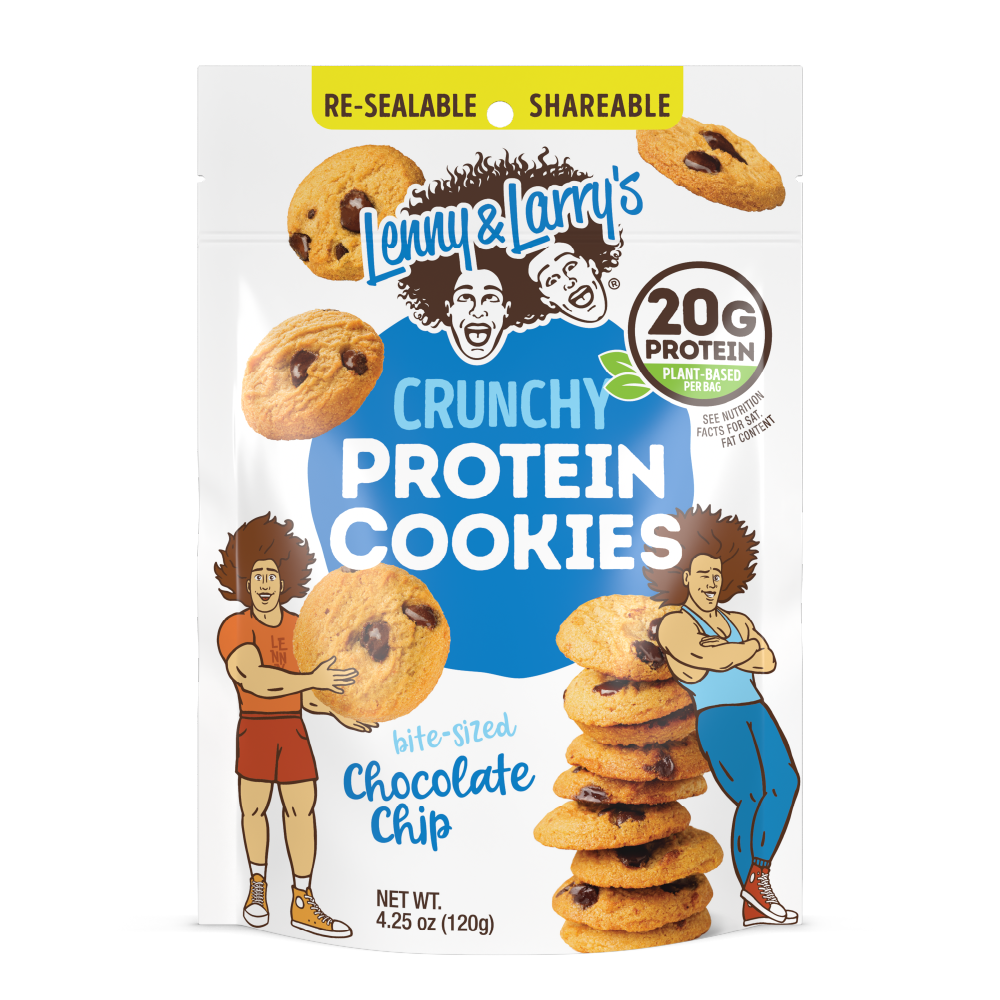Updated May, 2025.
Protein.
From bodybuilders to gym enthusiasts and those interested in increasing their healthy lifestyle, this word is well loved and widely used. We all need protein, and we all need to make sure we get enough of it. Although these complex molecules can seem most important to athletes and those actively working to build muscle, it turns out that all of us need this essential molecule.
But protein can seem shrouded in so much confusion. What exactly is it? What foods give it to us? How do we get enough of these foods?
We’re here to help. We come alongside you as you navigate through the role of protein in your lifestyle.
What is a Protein?
We’ll admit: proteins are a little complicated.
Protein is a fundamental macronutrient composed of amino acids (organic compounds that combine to form the building blocks of your body's tissues and organs). These amino acids are categorized into two types: essential and non-essential.
Essential amino acids cannot be synthesized by your body and must be obtained through your diet, while non-essential amino acids can be produced internally.
Proteins are involved in virtually every cellular process. They contribute to the structure of muscles, skin, and bones, and are integral to enzymes that catalyze biochemical reactions, hormones that regulate physiological activities, and antibodies that defend against pathogens. Your body cannot effectively perform these critical functions without adequate protein intake.
Why do our Bodies Need Protein?
Turns out, proteins are powerhouses. We find them all over our bodies—in our hair, skin, and all sorts of tissues. They’re also essential to our bone health. Without protein, these elements of our bodies would not be able to operate.
And our bodies need protein every day. The National Academy of Medicine has established some helpful guidelines to determine how much daily protein your body needs to function. It’s a simple calculation based on your overall body weight. For instance, the recommendation is to consume 7 grams of protein for every 20 pounds of body weight. That works out to around 50 grams of protein if you weigh 140 pounds or 70 grams if your weight is 200 pounds.
Below, we explore in more depth where you can find the protein you need daily.
Where can I Find Protein?
When someone mentions protein, your first thought is probably meat - and that’s fair.
Animal-based sources like beef, chicken, pork, and turkey have long been considered the go-to for high-quality protein. These options are widely available, easy to prepare, and offer all nine essential amino acids your body can’t produce on its own.
But meat is only one part of the picture.
You’ll also find complete proteins in eggs and dairy products like yogurt, cheese, and milk. These staple items in many households can easily be incorporated into everyday meals, from breakfast scrambles to post-workout smoothies. Seafood (including fish like salmon, tuna, and sardines) adds variety to animal-based options, along with the bonus of omega-3 fatty acids.
Protein isn’t exclusive to animal products. Plant-based foods offer a surprisingly robust range of options, even if they don’t all contain complete amino acid profiles. Legumes, grains, soy, seeds, nuts, and vegetables like spinach or broccoli contribute meaningful amounts. Pairing complementary sources, such as rice with beans or oats with peanut butter, can help you create a complete amino acid profile without relying on animal ingredients.
You’ll also find protein in a growing market of fortified foods and supplements. Plant-based protein powders (like pea, rice, or hemp), bars, and ready-to-drink shakes are widely available and designed to fit busy lifestyles. These products offer convenience without compromising nutrition for those looking to fine-tune their intake or avoid allergens.
From grocery aisles to farmers’ markets to fitness stores, protein is everywhere... You just need to know where to look.
What is Plant-Based Protein?
Plant-based protein is derived from non-animal sources such as legumes, grains, nuts, seeds, and certain vegetables.

Unlike animal proteins, which are typically complete and contain all nine essential amino acids, many plant proteins are considered incomplete on their own. However, when combined, plant foods can provide a full spectrum of essential amino acids your body requires for tissue repair, immune function, and enzymatic activity.
Modern definitions of plant-based protein go beyond simply being "not from animals." According to recent research, plant-based proteins now encompass minimally processed sources like beans and lentils, as well as extracted and concentrated proteins found in products like pea protein isolate and fermented mycoproteins.
These new forms are designed to offer enhanced digestibility and amino acid profiles that rival traditional animal sources. As processing technologies improve, plant protein's nutritional quality and bioavailability have also increased, closing the gap in protein efficiency and absorption rates.
In nutritional science, "plant-based protein" also reflects a broader shift toward sustainable eating patterns. It's not just about the source; it's about the ecological and ethical considerations tied to that source. With climate change, food security, and public health becoming central to dietary guidelines, plant proteins are positioned not only as alternatives but as preferred options for long-term health and sustainability strategies.
What are Good Sources of Plant-Based Protein?
When most people think "meat-free," they often default to a scoop of protein powder. But plant-based protein isn't limited to a shaker bottle or a salad. Plant-based protein is found in a wide spectrum of whole foods, snacks, grains, and vegetables. With consumer demand and food tech accelerating innovation, you now have more ways than ever to hit your protein goals without relying on animal products.
Here's a look at the most effective and trending sources of plant-based protein today:

1. Protein-Enhanced Snacks & Bars
Convenient, portable, and often packed with fiber, protein snacks are a go-to for busy lifestyles. Brands like Lenny & Larry's have redefined plant-based snacking with products like the Complete Cookie-fied® Bar. Each bar offers 12g of plant-based protein, 5g of prebiotic fiber, and a chewy-crunchy combo that breaks up the monotony of standard protein bars. Available in flavors like Chocolate Almond Sea Salt and Peanut Butter Chocolate Chip, these bars go beyond taste (they're also free from dairy and soy, appealing to a wide range of dietary needs).
2025 trends also show a rise in snacks made with fava bean protein, mung bean protein, and mycoprotein (a fungal-based protein source), all of which provide strong amino acid profiles and sustainability benefits.

2. Plant-Based Protein Powders
Powders have evolved far beyond basic pea or soy blends. Newer products combine multiple sources like pumpkin seed, watermelon seed, brown rice, and chia to create complete protein profiles with minimal processing. Fermentation techniques are being used to improve digestibility and amino acid bioavailability, a game-changer for those with gut sensitivities.

3. Legumes, Beans & Pulses
These are nutritional powerhouses. Black beans, lentils, chickpeas, and split peas offer 7–9g of protein per cooked half-cup serving. They're rich in lysine, a crucial amino acid often lacking in grain-based proteins. Beyond protein, these foods deliver fiber, iron, zinc, and resistant starch, supporting gut health and blood sugar stability.
Expect to see more sprouted and pressure-cooked options on store shelves this year, which improve digestibility and reduce antinutrients.

4. Whole Grains & Ancient Grains
Quinoa is still the standout as a complete protein, offering 8g per cooked cup, but it's joined by teff, farro, bulgur, and amaranth. These grains contribute protein and micronutrients like magnesium, iron, and B vitamins.
In 2025, food manufacturers are blending these ancient grains into ready-to-eat cereals, tortillas, and even yogurts to increase daily protein intake without much effort.

5. Vegetables (Yes, Really)
Though often overlooked, dark green vegetables such as spinach, broccoli, and brussels sprouts contribute meaningful amounts of protein per calorie. A cup of cooked spinach offers around 5g, while a cup of broccoli adds 4g.
These numbers increase when combined into a full meal, especially when paired with legumes or grains. New research also highlights the role of vegetables in providing complementary amino acids, which can boost the overall quality of your diet.

6. Seeds & Nuts
Chia seeds, hemp seeds, pumpkin seeds, and almonds are more than just toppings. Two tablespoons of hemp seeds pack about 10g of protein, while a tablespoon of peanut butter adds 4g.
These foods also provide healthy fats, antioxidants, and minerals like zinc and selenium. In 2025, defatted seed flours will become popular as low-fat, high-protein alternatives in baking and meal prep.

7. Fermented Plant-Based Proteins
Fermentation is one of the most promising trends in plant-based nutrition. Fermented soy (like tempeh), lupin, and pea-based products show improved digestibility and higher nutritional absorption.
Mycoprotein - derived from fungi - has also gained significant attention for its muscle-preserving benefits and low environmental footprint.
The Takeaway on Plant-Based Protein
If you're shifting away from animal products or simply looking to diversify your diet, plant-based protein offers more than enough to meet your nutritional needs. Thanks to advancements in food science, better ingredient combinations, and improved digestibility, it's easier than ever to get high-quality protein from plants without compromising taste, variety, or convenience.
Whether you're getting your protein from whole foods, functional snacks, or enhanced powders, consistency and diversity matter most. Relying on a mix of legumes, grains, seeds, and modern plant-based innovations ensures you're not just hitting your protein targets, you're supporting long-term health, digestion, and even environmental sustainability.
The demand for plant-forward diets has sparked a new era of options. As the research continues to validate their benefits, one thing is clear: you don't need meat to meet your protein goals. You just need to know where to look and how to combine the right foods to fuel your body with purpose.
 Lenny and Larrys
Lenny and Larrys
